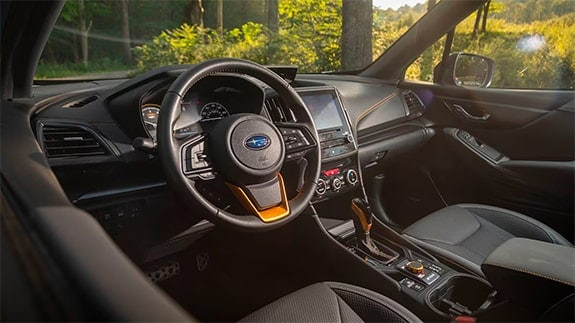Price vs. Cost
A lot of the discussion of EV and PHEV practicality centers on whether buyers can justify the higher purchase price with fuel savings.
Frankly, it is hard to make up a big price differential on fuel savings alone unless gasoline prices really soar. If the average price for gasoline was $3.75 a gallon and electricity cost 12 cents a kilowatt-hour, the fuel cost for driving 15,000 miles in a Leaf would be roughly 30 percent of what fuel would cost for a 30-mpg car or truck. It would take six years at these prices to erase an $8,000 price difference between the Leaf and an internal-combustion equivalent. But if you raise the cost of fuel to $5 a gallon for gasoline and 14.7 cents per kilowatt for electricity (an increase of about 33 percent for each), the EV earns back that $8,000 from fuel savings alone in just over 4.5 years.
Gas vehicles also need oil changes and periodic tune-ups. EVs don't need either. Routine maintenance for most electric cars is periodic tire rotation and windshield wiper blade replacement. EVs also do away with expensive-to-repair transmissions, since they have single-speed gearboxes and sealed motors with only a few moving parts.
PHEVs aren't quite so parsimonious. Their internal combustion engines still need maintenance. Both EVs and PHEVs use regenerative braking systems that can slow the cars to almost a complete stop before the mechanical brake comes into play. That tends to greatly extend the life of the mechanical brakes, reducing the frequency of expensive brake jobs.
Ford ran some figures in 2010 using a prototype version of its Focus EV and found that the typical Focus EV owner would save $1,200 in routine maintenance costs over the life of the car. Researchers at UC Berkeley estimated in a 2008 study of EV ownership costs that EV drivers in California would, on average, save $7,200 in maintenance, insurance, fuel and other routine costs over 100,000 miles of use. Adjusted for inflation, that's about $7,950 this year.
A Cold-Weather Workhorse
There are as many EV and PHEV stories as there are drivers. Most of the stories are positive because most of the first buyers are early adopters with a predisposition to favor the cars and put up with their idiosyncrasies. But there aren't many who have simply trusted in good fortune and lucky charging and have been able to avoid disappointment or a stranding on the side of a road.
More buyers are like John Hipchen, an Illinois marketing consultant. Something prompts their curiosity about EVs, and they do some homework before buying. The trigger for Hipchen was rising gasoline prices. He got so fed up with them that he ditched his 2007 Jeep Grand Cherokee in early 2012 and bought a Nissan Leaf.
Hipchen works with the Copper Development Association and has blogged about his Leaf experiences. He knew that electric motors, which use a lot of copper, are pretty efficient. What he didn't know was how a Leaf would do in Chicago-area winters and how it would mesh with his need for a vehicle that he could use for two jobs, both traveling to the offices of his clients and ferrying supplies to his wife's coffee shop.
He said he analyzed his driving needs before making the purchase and knew that for him and his wife the Leaf would provide enough range for almost all their daily driving needs. The Hipchens have a 2007 Ford Taurus they use for a backup vehicle and for the rare trips the Leaf can't handle.
He says he's had no problems, even when winter temperatures dropped well below freezing for weeks on end. Hipchen says the car's range dropped about 40 percent on really cold days, to around 50 miles from its summer norm of 85 miles, but says he's experienced no other weather-related issues.
"I've found that workplace charging is the key to surviving a cold winter with a battery EV," says Hipchen. Batteries can't take on or release as much energy in extreme cold as in "normal" temperatures, so range is reduced. Having a charger at work ensures that he gets home at the end of the day, Hipchen says.
His biggest shock was when he first started driving and began enjoying the oomph that an electric motor provides. He found that he was averaging just 2.7 miles per kilowatt-hour of power. This compares pretty badly with the national average of 3.5 miles per kWh. He was getting just 65 miles of range from the Leaf's 24-kwh battery pack. But he moderated his driving style, cutting out the jackrabbit starts. He says he now averages about 85 miles per charge and even at steady highway speeds, seldom drops below 75 miles of range on a full battery. Hipchen says he's put more than 43,000 miles on his Leaf.
"I'm as happy now as on the day I took delivery," he says.
Penciling It Out
So there it is: The numbers will be different for everyone, but if you can satisfy the bulk of your driving needs with an EV or PHEV and can either keep a gasoline vehicle for backup or can afford to rent one when needed, then the electric-drive vehicle's cost becomes the main issue.
If you keep a PHEV or EV for more than a few years, the combined savings in fuel, routine maintenance and repairs, coupled with any tax credits and other incentives at purchase time, could mean that an initially pricey EV or PHEV might actually cost no more to buy and operate than a gasoline vehicle that has a much cheaper MSRP.


 by
by 
